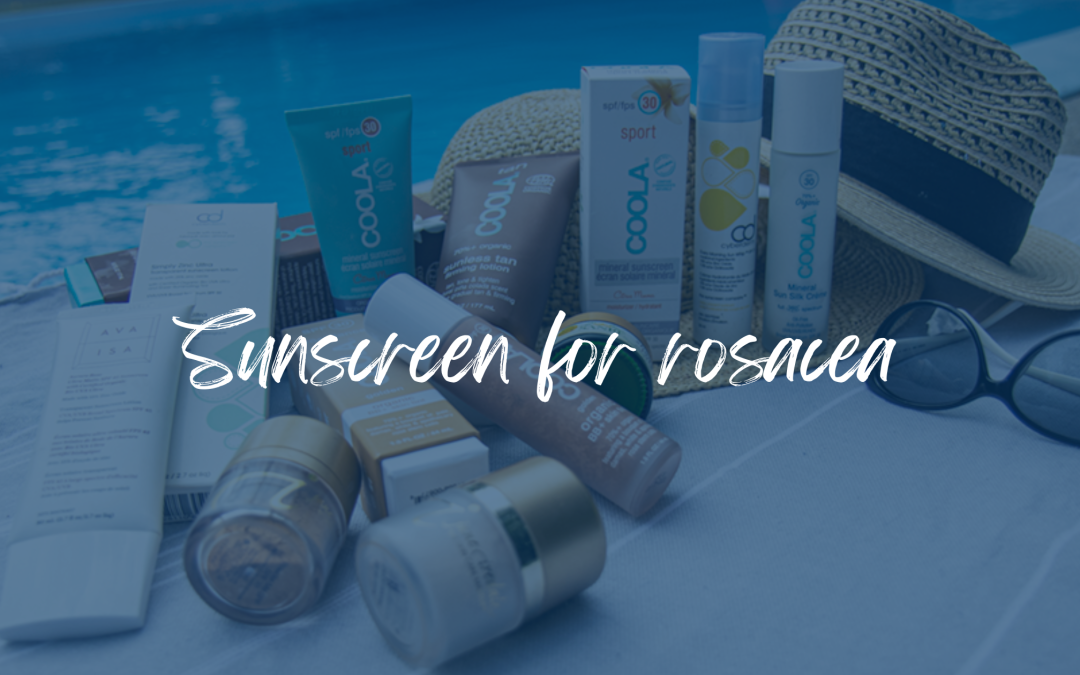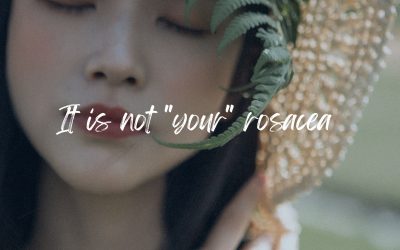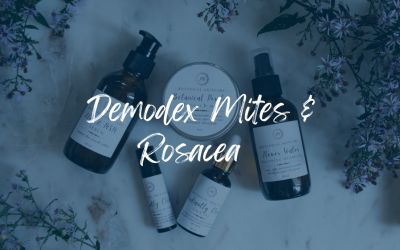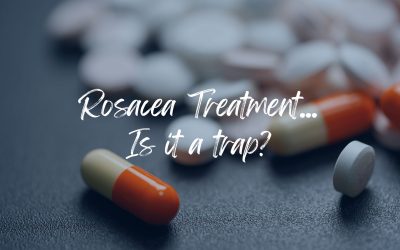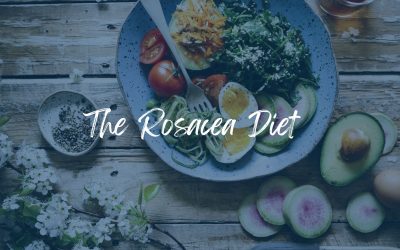In this article, we’re going to cover key things you need to know about sunscreen for rosacea and toxic ingredients you absolutely want to avoid.
Should you wear sunscreen if you have rosacea?
We have, unfortunately, been brainwashed to fear one of our essential allies for optimum physical and mental health: the sun.
Is there such a thing as skin cancer? Yes.
Is it entirely the fault of the sun? No.
Could cancer result from the high level of toxicity in our environment? There’s certainly a lot of research pointing to that effect.
How about the fact that most toxic chemical sunscreen actually COOK your skin in the sun?
Interestingly enough, reports from the Environmental Working Group (EWG.org) have warned consumers against using several brands of conventional sunscreens that include toxic ingredients.
Yet, chemical ingredients such as oxybenzone, octinoxate, homosalate, fragrance and parabens — which are endocrine disrupters and/or known carcinogens — are still widely used in sunscreen.
A recent report published by the EWG shows that nearly two-thirds of all sunscreens evaluated in their “2019 Guide to Sunscreens” wouldn’t pass safety tests proposed by the FDA (the US Food and Drug Administration) yet, are allowed to be sold on the consumer market.
(EWG releases its analysis as part of their “Guide to Sunscreens,” which is a yearly report that the nonprofit has been publishing since 2006 — an important resource to share with friends and family.)
In February 2019, the FDA called for additional testing of a dozen common sunscreen ingredients after finding that high levels of avobenzone, oxybenzone, ecamsule and octocrylene can enter a person’s bloodstream after just one day of use.
Tests also showed that these toxic chemicals remain in the body for at least 24 hours after the last sunscreen application.
Apply sunscreen every day for an entire summer season, and you’ve just added that much more toxicity for your liver to deal with. Considering what we know about the skin-liver connection, this is far from ideal.
Before we jump in and talk about nontoxic sunscreen for rosacea, we need to address our next point…
Why we should stop fearing the sun (even if you have rosacea)
If you’ve been trying to heal your rosacea naturally and holistically, you may know about the crucial role emotions play in your healing.
Fearing the sun (or what the sun will do to your skin) is just not a sustainable or helpful strategy.
First, fear will keep you stuck in a sympathetic (stressful) state which will put a full stop to your healing. Your body needs to be in a safe, parasympathetic state to heal, so getting out of a fearful state of mind is key.
Can rosacea skin react badly to strong sun exposure? It can. But if you lower the INNER inflammation in your body, the sun will no longer aggravate your skin.
I’ve seen this firsthand personally and for clients who now enjoy outdoor activities without their skin becoming inflamed or breaking out due to sun exposure.
So friends, let’s be discerning when it comes to generic advice about rosacea and “managing triggers” like the sun and let’s ask more relevant questions such as “WHY do you have rosacea in the first place?”
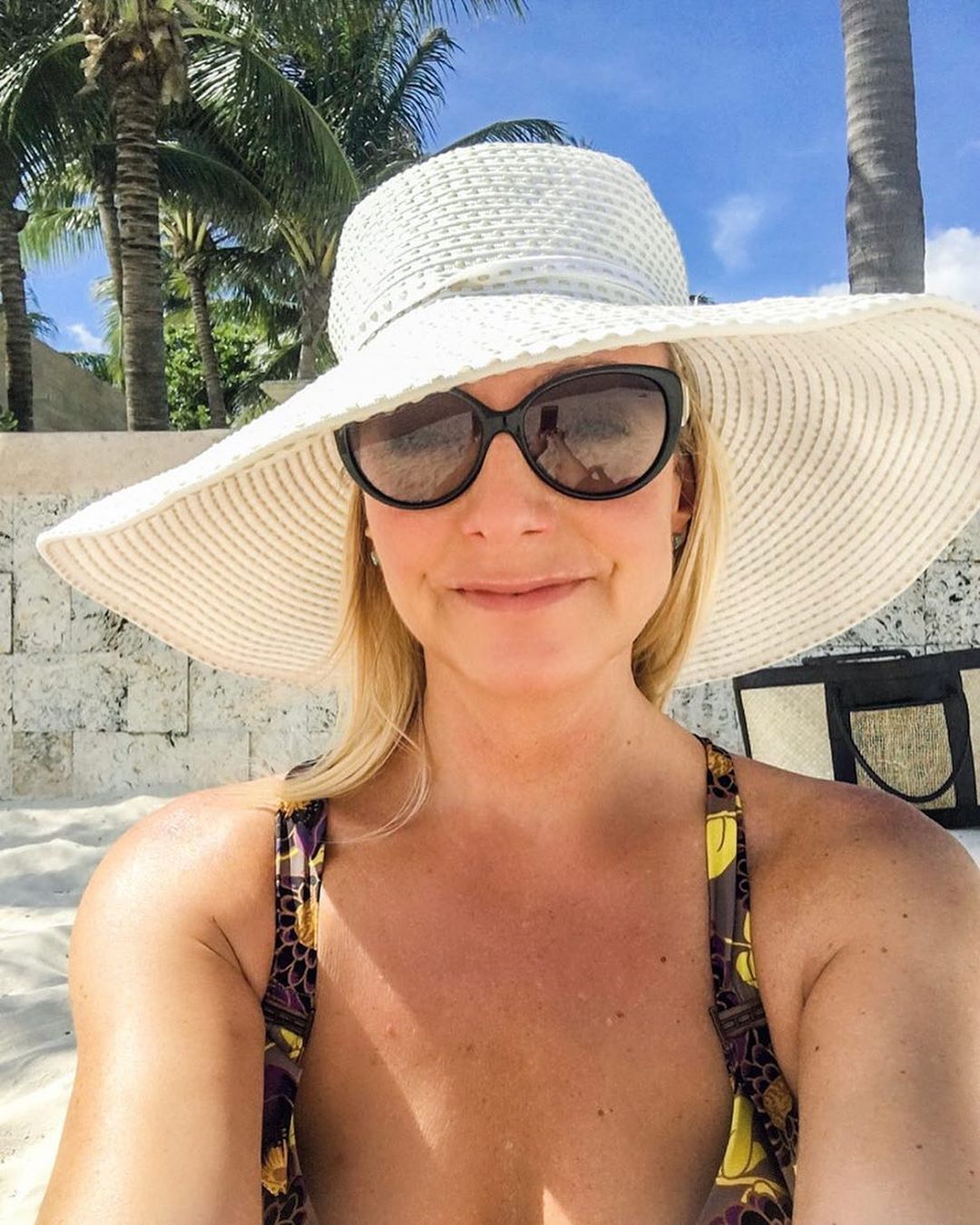
What kind of sunscreen is best for rosacea?
It’s hard to say exactly which sunscreen will be best for you if you have rosacea (you’ll have to patch test) but key things to look out for are:
• nontoxic sunscreens with natural ingredients
• sunscreen brands that create products for sensitive skins
• sunscreens with active botanical that fight inflammation and redness
• sunscreens that have a tint to even skin tone
Ingredients in sunscreen to avoid if you have rosacea
1. Oxybenzone
Oxybenzone is a known hormone disruptor that can also trigger allergic reactions. The EWG has reviewed the existing data about human exposure and toxicity for the nine most commonly used sunscreen chemicals. Oxybenzone is the most worrisome as it can cause allergic skin reactions (Rodriguez 2006). Also, in lab studies, oxybenzone has been shown to have strong anti-androgenic effects (Krause 2012, Ghazipura 2017).
Margaret Schlumpf of the University of Zurich detected four other sunscreen filters along with oxybenzone in Swiss women’s breast milk, which suggests that the developing fetus and newborns may be exposed to these substances (Schlumpf 2008, Schlumpf 2010). She detected at least one sunscreen chemical in 85 percent of milk samples.
2. Retinyl palmitate
Retinyl palmitate is a form of vitamin A linked to skin tumours and lesions on sun-exposed skin. A 2012 study by U.S. government scientists suggests that retinyl palmitate may speed the development of skin tumours and lesions when applied to the skin in the presence of sunlight (NTP 2012). Officials in Germany and Norway have cautioned that retinyl palmitate and other vitamin A ingredients in cosmetics could contribute to vitamin A toxicity when combined with excessive exposure to the sun (German BfR 2014, Norwegian SCFS 2012a).
https://www.ewg.org/sunscreen/report/the-problem-with-vitamin-a/
3. The “Dirty Dozen” ingredients
The “Dirty Dozen” ingredients include parabens, phthalate, PEG, parfum (a.k.a. fragrance) and sodium lauryl/laureth sulphate.
4. Category II ingredients
Based on existing data, the FDA has also concluded that two active ingredients often found in sunscreen, PABA (amino benzoic) and trolamine salicylate, are unsafe and have been placed in Category II. These active ingredients are not used in any sunscreens currently marketed in the United States, but keep your eyes open if you have an old bottle lying around somewhere.
5. Category III ingredients
According to the FDA, the Category III sunscreen ingredients lack sufficient data to support whether they are generally recognized as safe and effective. Existing evidence suggests that these active ingredients may be absorbed through the skin, and data about the consequences of this absorption are missing (large companies have no desire to invest in this kind of research). Category III sunscreen ingredients are cinoxate, dioxybenzone, ensulizole, homosalate, meradimate, octinoxate, octisalate, octocrylene, padimate O, sulisobenzone, oxybenzone, and avobenzone.
What is a mineral sunscreen and how does it work?
Sunscreens that use mineral filters as the primary active ingredient are called physical, inorganic or mineral sunscreens.
The active mineral ingredients in sunscreens are zinc oxide and/or titanium dioxide. Zinc oxide is a naturally occurring mineral formed from the metal zinc. Titanium dioxide is also a naturally occurring mineral that is formed from the metal titanium.
These mineral filters create a physical barrier on the top of the skin. The mineral filter sunscreen molecules reflect and scatter both UVA and UVB rays from the skin. Unlike chemical sunscreens, the mineral filters do not break down and release heat into the skin.
Both zinc oxide and titanium dioxide are said to be safe and very stable in formula as well as when exposed to the sun. Since they’re not absorbed by the skin, they will not cause an allergic reaction, which is key for people (like me) who have sensitive skin.
The safest sunscreen filters are non-nano zinc oxide (non-nano means that it will not be absorbed; it will sit on top of the skin) and titanium dioxide.
My current favorite rosacea-friendly sunscreens:
Ilia’s Super Serum Skin Tint SPF 40
Skin Barrier Sun Shield SPF 30 by Tru Botanicals
Guardian Angel SPF 50 Milk by Solara (love this one!)
More clean, non-toxic SPF options on TheDetoxMarket.com
If you’re like me and would like to avoid wearing sunscreen, try these tips:
1. Wear a wide-brim hat
Invest in a stylish wide-brim hat or if, like me, you like to Stand up Paddle board, wear a cap. It won’t cover your face all the time but it’ll do the job. (The goal is to still enjoy life, right?)
2. Try a Foundation with SPF, Tinted Sunscreen & SPF Powders
Tinted sunscreens are a great way to even out skin tone AND protect.
3. Choose shade over sun whenever possible
Seek the shade, especially when the sun is at its most potent around noon. If you can’t find shade, carry a light organic cotton shawl to cover your shoulders.
4. Adopt a functional approach to healing rosacea
Adopting a functional approach to healing rosacea is, ultimately, the best way to make real progress on your journey to glow. You’ll need to look at gut dysbiosis, optimizing your liver detox pathways, eliminating toxicity in your food, water and environment, and you may also want to dive into the emotional root cause.
If you’d like to dive deeper into toxic ingredients commonly hiding in sunscreen, check out this post I wrote on journeytoglow.com.
Resources & Links
https://davidsuzuki.org/queen-of-green/choose-safe-sunscreen/
https://www.ewg.org/sunscreen/report/the-trouble-with-sunscreen-chemicals/
https://www.ewg.org/sunscreen/report/nanoparticles-in-sunscreen/
https://lovesunbody.com/blogs/news/spf-alone-is-not-enough
https://www.theguardian.com/us-news/2019/may/22/chemicals-in-cosmetics-us-restricted-eu
https://www.rawelementsusa.com/pages/sun-protection-guide
https://www.skincancer.org/prevention/sun-protection/sunscreen/sunscreens-explained
Need guidance on your skin healing journey?
Rosacea Articles
How to stop identifying with rosacea
Identifying with a dis-ease such as rosacea can become a hurdle on your journey to healing. In this post, we're going to dive into why you want to stop identifying with rosacea and how to get about doing that. I wrote this piece for folx who've had rosacea for 5, 10,...
Demodex Mites Rosacea
Rosacea Demodex Mites This blog post will dive into everything you need to know about natural solutions for Demodex mites and rosacea. Please scroll down for a video also on the topic. What are Demodex mites? Demodex mites are tiny, microscopic mites that are found on...
Rosacea treatment, is it a trap?
Is looking for a rosacea treatment a trap? I wanted to address the topic of “rosacea treatment” because it is, unfortunately, the number one search on Google. (More on why it's unfortunate later on in this article.) In your search for a “rosacea treatment”, you may...
The Rosacea Diet
The Rosacea Diet While a late-night Googling may have shown you 200 searches claiming that there is such a thing as a “rosacea diet”, the truth is that a one-size-fits-all “rosacea diet” isn’t going to get you to your goal of rosacea-free skin. Will the so-called...
